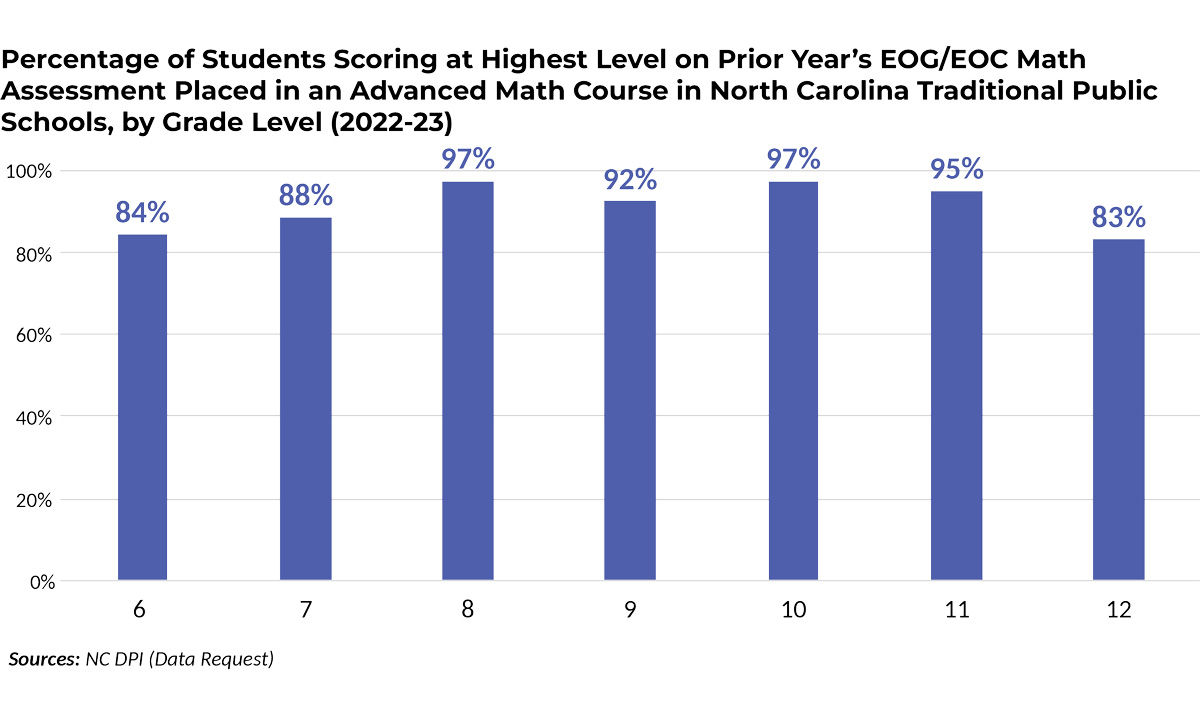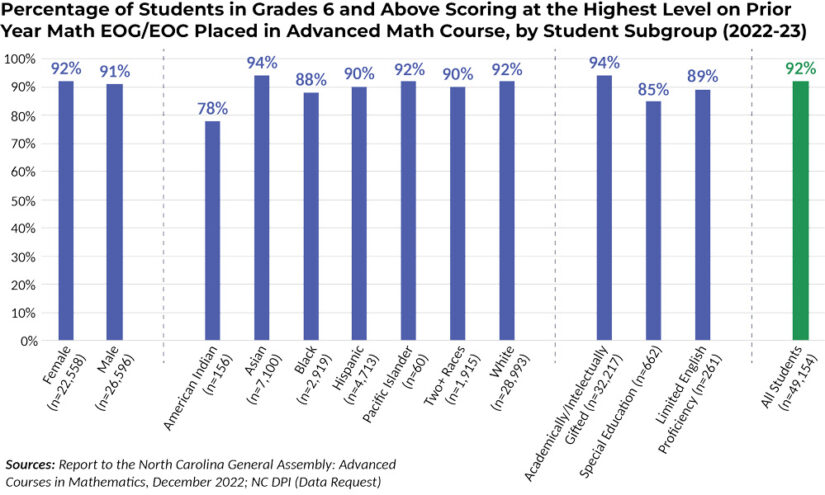Why Your State Should Automatically Enroll Top Math Students in Advanced Classes
Berg & Plucker: North Carolina's first-in-the-nation-law has expanded access to higher-level academics to kids who traditionally have been shut out.

Get stories like this delivered straight to your inbox. Sign up for The 74 Newsletter
Many high-performing students are not offered advanced learning opportunities even when there is clear evidence that they are ready for higher-level academics. This is especially true for Hispanic, Black, Native American and low-income students, leading to a chronic underchallenging of many of the nation’s brightest children. As a result, these students are less likely to be ready for postsecondary education.
One obvious, but surprisingly underused, remedy is automatic enrollment. Also known as mandatory or opt-out enrollment, the concept is straightforward: Students who perform at the top of their classes are automatically placed in advanced courses for the following academic year. A handful of districts and states are considering or have recently created auto-enrollment policies, but North Carolina is far ahead, having implemented this approach with unanimous legislative support in 2018.
Its first-in-the-nation law requires all students who score at the highest level on their end-of-grade or end-of-course math test to be given advanced coursework the next year. While families can opt out if they feel the course is not a good fit for their child, the overarching message is, “if a student earns the spot, they get the spot.”
A unique aspect of the North Carolina policy is that it starts in third grade, with the goal of engaging and challenging students early in their academic careers. Also, since taking algebra in eighth grade has been shown to have an impact on advanced students’ future math achievement, North Carolina’s legislation specifically guarantees access to high school-level math for highly qualified middle schoolers.
To strengthen transparency and accountability, the law was updated in 2019 to require an annual report on implementation statewide, regionally and by subgroups. The state Department of Public Instruction estimates that in the year before the legislation, roughly 10% of eighth graders in lower-level math classes, about 2,100 children, had actually earned top scores on the grade 7 math assessment. That number has since decreased to 3%.
Several districts have reported that the policy helped to accelerate students who might otherwise have been overlooked. Districts responded to the legislation by developing partnerships between middle and high schools, expanding virtual instruction, personalizing support based on students’ needs and increasing access to advanced education for students who previously were not offered such opportunities.
District data reveal that statewide, 92% of students in grades 6 and above who scored at the highest level on their prior year’s exam were placed in an advanced math course in 2022-23 (45,003 out of 49,154). Although those numbers may sound impressive, they also raise serious questions about why nearly 10% of qualified students were not placed. Were those decisions made by their parents, or were other issues at play? There were also demographic gaps, with 92% of white students placed, versus 88% of Black, 90% of Hispanic and 78% of Native American students.

In addition, there was significant variation by grade, with sixth, seventh and 12th grade placement rates lower than those for eighth, 10th and 11th grades. Lower rates in sixth and seventh grades suggest not all districts offer advanced courses to students at the early middle school level. There are a host of possible reasons: For instance, in small, rural schools, even a sharp increase in the percentage of qualifying students may not yield enough to fill a traditional class. This could make staffing challenging — especially in districts with teacher shortages.
Lower 12th grade rates may be a result of some districts exhausting their roster of advanced math courses, or of seniors choosing to do their advanced coursework in other subjects.
These initial results suggest that the law’s primary goal is being fulfilled: Most of North Carolina’s mathematically talented students are taking advanced courses in their public schools. But the data also suggests considerable work needs to be done to identify the remaining barriers that prevent districts from offering advanced math to qualified students. And the law cannot be judged a true success without evidence that the increase in advanced opportunities is resulting in higher rates of advanced performance, both in the classroom and on standardized tests.
But it appears safe to conclude that the initial implementation of North Carolina’s first-in-the-nation automatic enrollment policy has achieved its aims. At a time when some districts and states are reducing or even eliminating access to advanced math in the name of equity, North Carolina’s approach suggests that advanced education is far too uncommon in public schools and needs to be greatly expanded — for both the individual student and the broader benefits to the nation’s economy and culture.
The North Carolina experience provides evidence that the path to equity and excellence is through increased access to advanced opportunities.
Get stories like these delivered straight to your inbox. Sign up for The 74 Newsletter

;)

